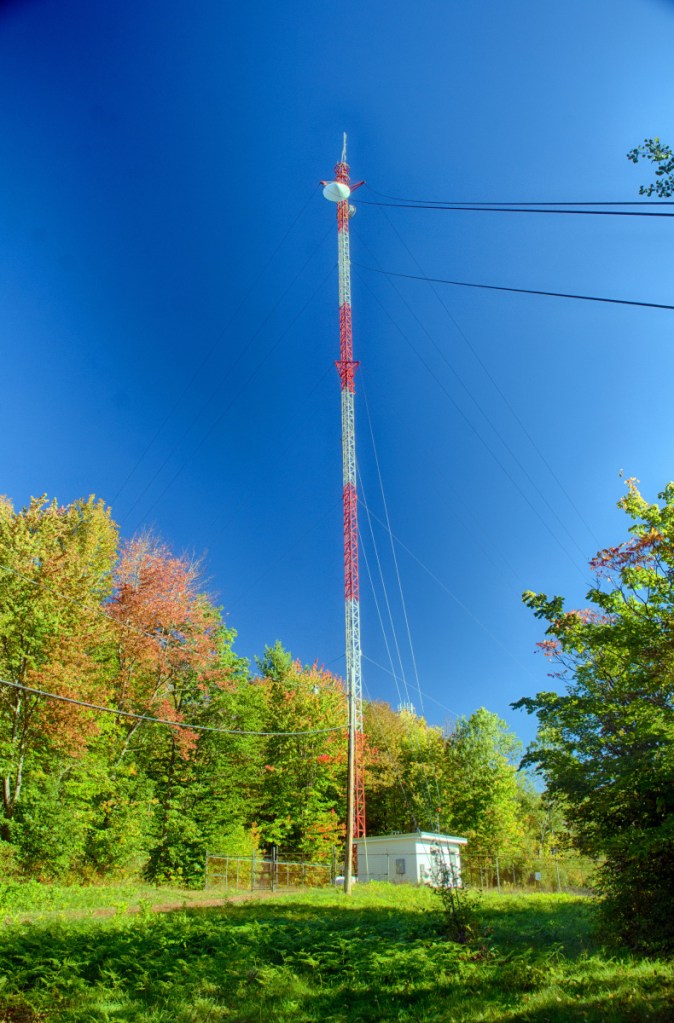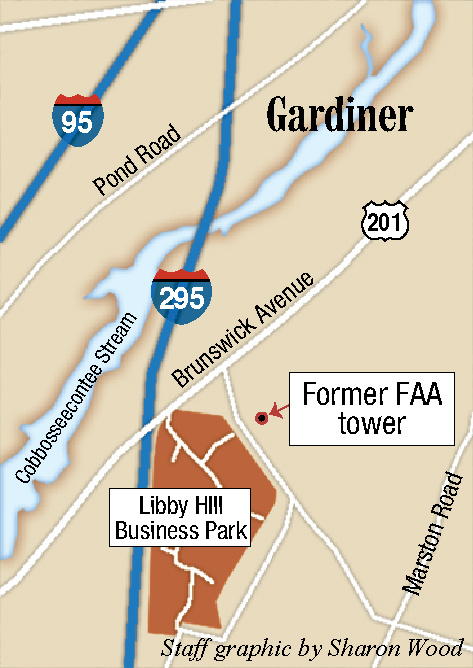GARDINER — When the paperwork first crossed Al Nelson’s desk two years ago, it didn’t seem like a big deal.
The federal agency in charge of federal property was notifying Gardiner city officials that it was declaring some land on Libby Hill as surplus.
It was not until some days later that it struck Nelson what that property was: the Federal Aviation Administration’s 260-foot-tall tower.
And now, when the tower goes into service under the city’s ownership in the next month, public safety agencies in southern Kennebec County will be able to communicate in what are now dead spots.
The city has a radio tower, also on Libby Hill, that tops out at less than 100 feet.
In the Kennebec River valley, and particularly in South Gardiner, Nelson said, there are dead areas where emergency radio communication is particularly difficult for the city’s fire and police departments.
That has required some work-arounds, including one for downtown Gardiner, he said, which means switching frequencies.
“If I want to talk downtown, I either have to change frequencies or have a radio that will do that automatically,” he said. “This will fix that. We won’t have separate frequencies.”
With the new tower, which is more than twice as tall, communication will be different.
“It expands our range and fills our dead spots,” he said.
Sean Goodwin, the director of Emergency Management for Kennebec County, said the new tower will cover not only the southern end of Kennebec County, but it also will reach into Lincoln and Sagadahoc counties.
“We’ll have 40 percent more range,” Goodwin said. “It’s going to be phenomenal.”
The tower facility also comes with a generator on site and two weatherproof buildings that house radio equipment, he said.
“It’s a win-win situation,” Goodwin said.
When Nelson first realized what the property was, he said, then-City Manager Scott Morelli was on the verge of notifying the GSA that the city, with its right of first refusal, was not interested.
The letter initially was puzzling because while it referenced the tower, it opened with this statement: “The above-referenced property was been determined to be surplus to the needs of the Government. The property has also been deemed suitable and available by the Department of Housing and Urban Development for homeless use … and is available for disposal.”
“I was waiting for him when he came in that day,” he said. “I said, ‘We have to talk.'”
With the endorsement of the City Council, work started on the monthslong process to transfer ownership from the federal government to the city of Gardiner.
Paperwork ensued.
It took a year, he said, to get to the point that government officials agreed Gardiner could have it. The sticking point was the price.
At a meeting on the site with GSA officials, representatives from the offices of U.S. Sen. Angus King, I-Maine, and U.S. Sen. Susan Collins, R-Maine, and interim City Manager Anne Davis, Nelson said, he was trying to figure out how to ask whether the city could get it free, when Davis asked that very question.
After a little more paperwork with the Federal Emergency Management Agency, it was transferred to FEMA so it could be conveyed to the city.
“Everyone was great,” Nelson said. “It was just time-consuming.”
The transfer was completed in February, but there was more work and paperwork to do, including installing the equipment needed for radio communication and getting the tower licensed with the Federal Communications Commission.
While the tower was free, some costs have been attached to the project.
“We’ll have about $60,000 in all of the upgrades — equipment, antennas, cables and the combiner,” he said. “And there’s biannual inspections that have to be done. There’s power and propane and the insurance.”
All of the users of the tower are paying a $2,000 annual maintenance fee that will be set aside in a separate revenue fund to pay for emergency repairs as well as maintenance. The users include Gardiner firefighters and police, Gardiner Public Works, the Gardiner-area school district and a group of neighboring towns.
Nelson said the cost cannot be underwritten by co-locating commercial cellphone towers there.
If more communities want to sign on to use it, they can be added, he said.
“We have work-arounds right now. The problem with work-arounds is that you have more moving parts, which gives you more areas to go wrong,” he said. “All we need is someone on a rescue call who didn’t flip to the right frequency or a police officer who can’t get communications out when stuff is going bad. We’re very confident this is going to fix that.”
Jessica Lowell — 621-5632
Twitter: @JLowellKJ
Send questions/comments to the editors.




Success. Please wait for the page to reload. If the page does not reload within 5 seconds, please refresh the page.
Enter your email and password to access comments.
Hi, to comment on stories you must . This profile is in addition to your subscription and website login.
Already have a commenting profile? .
Invalid username/password.
Please check your email to confirm and complete your registration.
Only subscribers are eligible to post comments. Please subscribe or login first for digital access. Here’s why.
Use the form below to reset your password. When you've submitted your account email, we will send an email with a reset code.